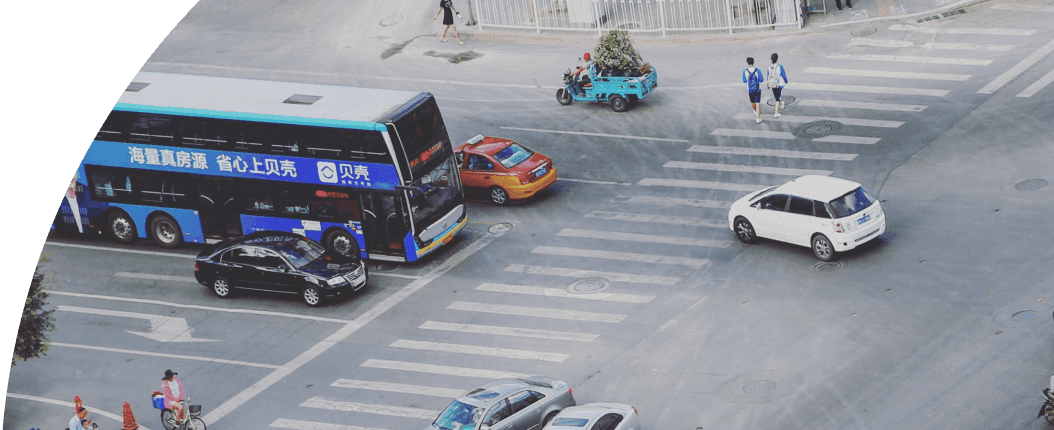
News
By Smart Growth America, June 28, 2012

Above: A rendering of neighborhood design for Ranson, WV. Ranson has received support from HUD, DOT and EPA to serve as a national model for how small rural cities on the fringe of a major metropolitan area can foster sustainable economic development, transit, and community livability through targeted and strategic planning and infrastructure investments. Image via Ranson Renewed.
In the three years since the Obama Administration announced the groundbreaking Partnership for Sustainable Communities – a directive which coordinates efforts across the Environmental Protection Agency (EPA) and the Departments of Transportation (DOT) and Housing and Urban Development (HUD) – the innovative and effective program has helped hundreds of communities across the country address economic development, transportation infrastructure, public health and environmental concerns through through grants and direct assistance.
“Even after only three years, the Partnership has proven its unquestionable value,” says Smart Growth America President and CEO Geoffrey Anderson. “Working together, the agencies are more efficient and more effective at enabling American communities to respond to the critical challenges they’re facing in today’s economy and in the years of growth ahead.”
“Having DOT, HUD and EPA work together, share best practices and coordinate grant processes seems like common sense, but this sort of collaboration is revelatory in Washington,” Anderson adds. “America’s economic, transportation, housing and environmental needs are not siloed. They are interconnected issues, and the Partnership for Sustainable Communities acknowledges this reality.”
In a recent article on Next American City, author Ben Adler also touched on the critical importance of the three-year-old Partnership, writing:
The Partnership draws rave reviews from advocates and practitioners across the country for its healthy goals and sensible approach to achieving them. In a sharp departure from the usual nay-saying that accompanies federal policymaking, it’s tough to get anyone to criticize the Obama administration’s signature urban program.
“A lot of folks may not have appreciated how extraordinary it actually is for cabinet departments to sign up to talk to each other,” says Sarah Kline, policy director at Reconnecting America. “The fact that they ran a joint grant program and reviewed each others programs is a sea change.”
And the coordination between federal agencies is already changing the way state and local governments work together. “Before the Obama administration there was no incentive for, say, the to work with the city of Stamford, Connecticut, much less across state lines,” says Chris Jones, vice-president for research at the Regional Planning Association (RPA) in New York City.
The Partnership has created new grant and technical assistance programs that have benefited over 700 communities across the country. Many of these projects – which often address long-term or large-scale challenges – would not have been possible without federal support. Among the projects the Partnership has made possible:
- HUD has supported 152 grants in 48 states, investing $240 million plus $253 million of leveraged public-private funds into innovative projects. A Community Challenge Grant in Memphis, TN helepd revitalize neighborhoods surrounding the city’s airport and enabled the creation of more than 4,500 jobs at companies such as FedEx, Electrolux, Mitsubishi and Nucor Steel.
- Likewise in more rural communities like Thurston County, WA, HUD Regional Planning Grants are enabling planning processes that will allow for successful responses to population growth, demographic change and pressing economic, transportation and environmental concerns.
- DOT has delivered on 218 projects in all 50 states, the District of Columbia and Puerto Rico. The unbelievably successful TIGER program, designed to encourage innovative transportation solutions through a competitive grant process, is just part of $3.1 billion invested in America’s transportation infrastructure and in expanding access to all citizens who use our nation’s multi-modal transportation network. In South Dakota, for example, the Mitchell-Rapid City Rail Line – rehabilitated with the help of a TIGER II Grant – will soon move agricultural commodities at a lower cost than the long-haul trucks currently in use. That rail project is expected to lessen high transportation costs to farming communities and ensure that more money goes back into the local South Dakota economy.
- EPA Technical Assistance Programs have provided tailored, on-the-ground training and resources to develop community-specific solutions to unique economic and environmental needs in our nation’s towns, cities and rural communities.
Recipients of HUD, DOT and EPA grants have been enabled via the Partnership for Sustainable Communities to apply for and receive secondary grants from the three participating agencies. This collaboration and extended focus on grant recipients is expediting projects from planning to completion, breaking down the traditional government processes that might otherwise delay important initiatives. From Pittsburgh’s riverfront to downtown Indianapolis to transit-oriented development in Denver to multi-modal transportation in Houston to the tiny town of Ranson, West Virginia, the Partnership is working to help every type of American community realize its full potential.
“It’s truly remarkable when you consider all the progress that has been made in only three years,” Anderson says. “The Partnership is breaking down the traditional barriers to change in government and communities across the country are seeing the benefits of that.”
Anderson cautions, however, that while it is important to acknowledge the steps taken since 2009, it is perhaps even more important to ensure the Partnership’s continued existence now and for decades to come.
“Again, we’ve made a lot of progress, and that’s good. But every year we talk about the Partnership during the appropriations and budgeting process, and it’s vital that we keep all aspects of it fully funded. If Congress threatens to defund a beneficial program in HUD, or we see cuts to a Partnership program at EPA, the full benefit of these agencies working together is lost. To realize the total impact of the Partnership and its innovative processes, we need to make sure we invest both in competitive grant and technical assistance programs.”
Related News

© 2025 Smart Growth America. All rights reserved
Site By3Lane Marketing










